
The Heliconiinae, commonly called heliconians or longwings, are a subfamily of the brush-footed butterflies. They can be divided into 45–50 genera and were sometimes treated as a separate family Heliconiidae within the Papilionoidea. The colouration is predominantly reddish and black, and though of varying wing shape, the forewings are always elongated tipwards, hence the common name.

Acraea terpsicore, the tawny coster, is a small, 53–64 millimetres (2.1–2.5 in), leathery-winged butterfly common in grassland and scrub habitats. It belongs to the Nymphalidae or brush-footed butterfly family. It has a weak fluttery flight. It is avoided by most insect predators. This species and the yellow coster are the only two Indian representatives of the predominantly African tribe Acraeini. It is found in India, Sri Lanka, Indonesia, Maldives to Myanmar, Thailand, Laos, Cambodia, Vietnam, Bangladesh, Malaysia, Singapore, and recently Australia.
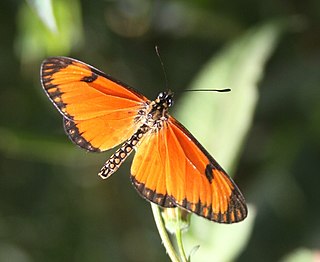
Acraea eponina, the orange acraea or small orange acraea to distinguish it from the larger A. anacreon, is a butterfly of the family Nymphalidae. It is found in tropical Africa and south-western Arabia.

Acraea encedon, the common acraea, white-barred acraea or encedon acraea, is a butterfly of the family Nymphalidae. It is found in sub-Saharan Africa and south-western Arabia. It is one of the species of Acraea sometimes separated in Telchinia.

Acraea cabira, the yellow-banded acraea, is a butterfly of the family Nymphalidae that is native to Africa.
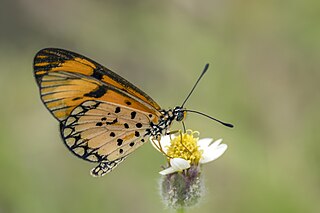
Acraea serena, the dancing acraea, is a butterfly of the family Nymphalidae. It is found throughout Africa south of the Sahara. It is the most common of the Acraea, from Dakar to Fort-Dauphin and from Yemen to the Cape.
Acraea kuekenthali is a butterfly in the family Nymphalidae. It is found in southern Tanzania and the Democratic Republic of the Congo (Shaba).
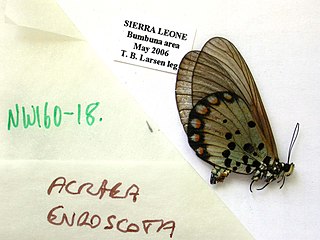
Acraea endoscota, the Le Doux's glassy acraea, is a butterfly in the family Nymphalidae. It is found in Guinea, Sierra Leone, Ivory Coast, Ghana, Nigeria, Cameroon, Gabon, the Republic of the Congo, the Central African Republic, northern Angola, the Democratic Republic of the Congo, Uganda, Rwanda, south-western Ethiopia, western Kenya and western Tanzania.
Acraea lapidorum is a butterfly in the family Nymphalidae. It is found in Angola.
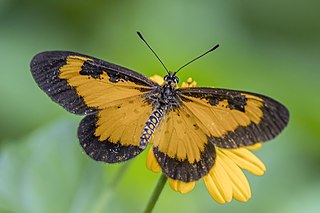
Acraea acerata, the falls acraea or small yellow-banded acraea, is a butterfly in the family Nymphalidae. It has an extensive range in sub-Saharan Africa.
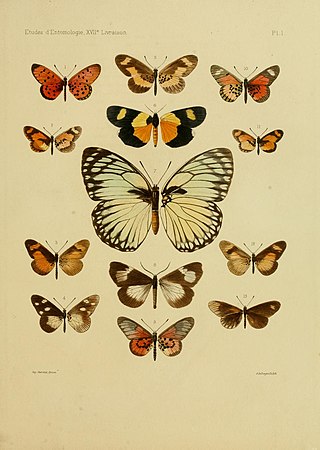
Acraea alicia is a butterfly in the family Nymphalidae. It is found in the Democratic Republic of the Congo, Burundi, Uganda, Kenya, Tanzania, Malawi and Zambia.

Acraea bonasia, the bonasia acraea, is a butterfly in the family Nymphalidae which is native to the African tropics and subtropics.
Acraea burgessi is a butterfly in the family Nymphalidae. It is found in Uganda (Kigezi) and the Democratic Republic of the Congo.

Acraea necoda is a butterfly in the family Nymphalidae. It is found on the central and northern plateau in Ethiopia.

Acraea conradti is a butterfly in the family Nymphalidae. It is found in Tanzania and Mozambique.

























